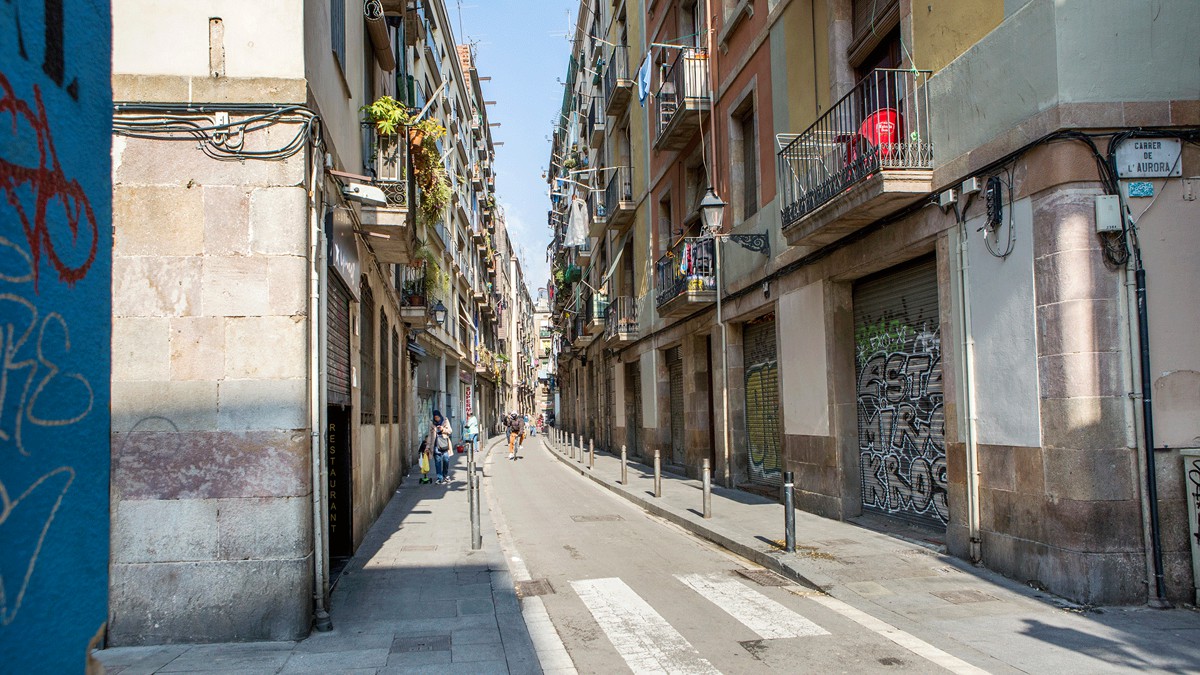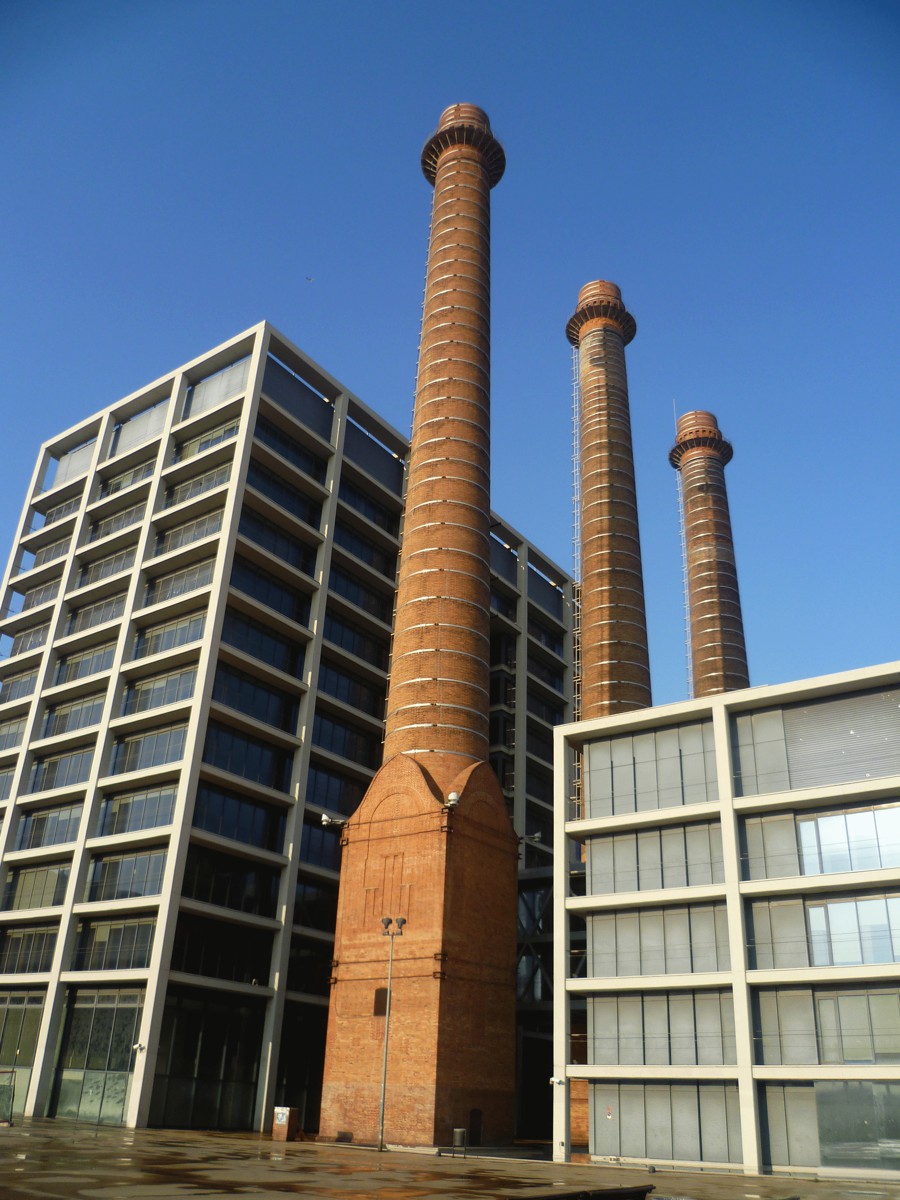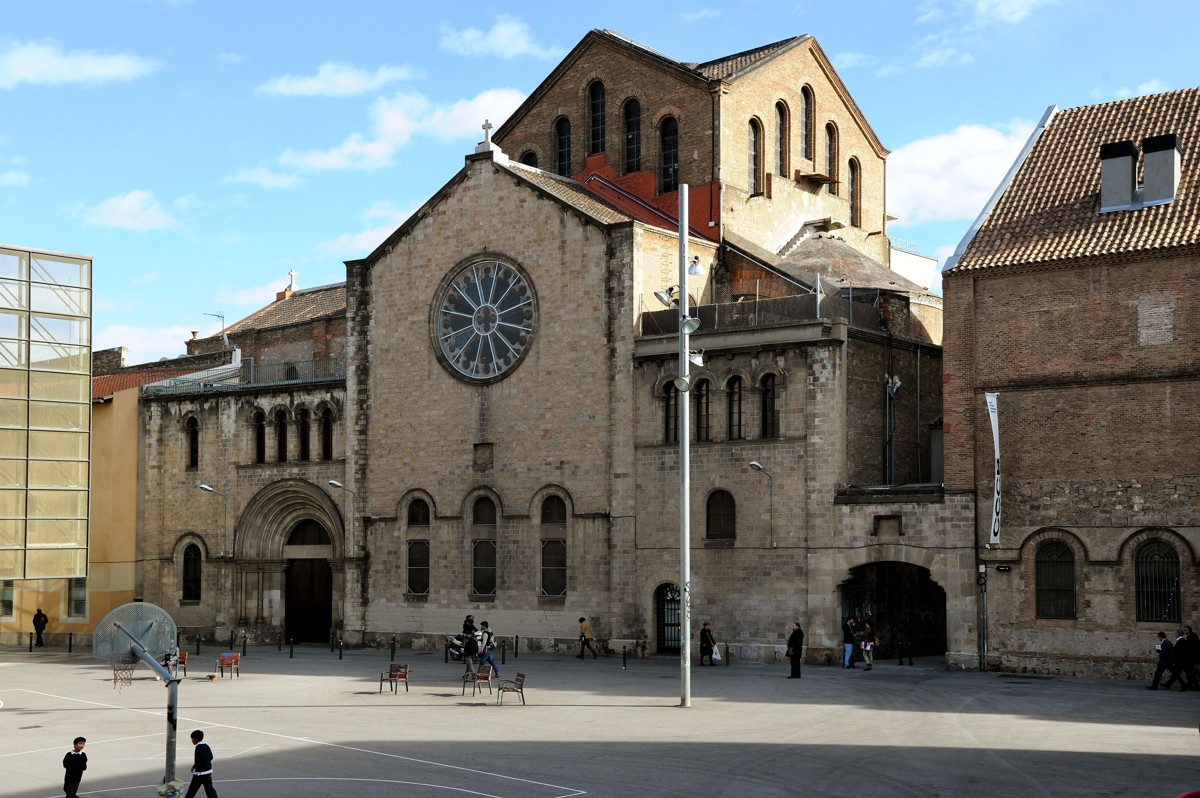meet.barcelona

Visit and love it
El Raval
Download date: 10/04/2024

The historical Raval neighbourhood, which remained outside the city walls during the Middle Ages, is now the neighbourhood with the city's richest and most varied cultural offering.
-
Urban spaces
Footprints of the past
The oldest building still preserved in El Raval is the Sant Pau del Camp monastery. It is Romanesque in style and originated in the 10th century when the area was outside Barcelona’s walls. But it in the Middle Ages, when the neighbourhood was full of cultivated fields and convents, it too was protected, by the third city walls. Some important buildings, built in the Gothic style then prevailing in Barcelona, remain from that time. The imposing Drassanes, for example, the shipyards that mark the maritime edge of the neighbourhood, and the old Hospital de la Santa Creu building, now transformed into the national library, the Biblioteca Nacional de Catalunya, which has an internal courtyard full of orange trees that is open to everyone and invites you in to have a rest.
It was not until the 18th century that urban planning made this another of the city’s neighbourhoods, and immediately, thanks to the low rents, it became the home of workers and immigrants from outside Barcelona, who often came fleeing hunger in the countryside to work in the ever more active industries in the city. Despite the natural darkness of El Raval, where it seems the sun finds it hard to shine in the middle of the humid narrow streets, Antoni Gaudí also left a colourful impression in the shape of Palau Güell, the family home of the businessman Eusebi Güell and the first great work of the Modernista architect, on Carrer Nou de la Rambla.
Transformation of the neighbourhood
At the end of the 19th and beginning of the 20th centuries, due to its proximity to the port, this became Barcelona’s barri xinès, or Chinatown. The centre of working-class riots, it was hit hard by the wars, which did not help El Raval lose the air of a marginal outskirt that hung over it for years. But the good times finally did come to the “xinès“: The opening up of the Rambla del Raval in the late 20th century, the renovation of many of the houses and iconic buildings, the positioning of more modern museums, like the Museu d’Art Contemporani (MACBA) and the Centre de Cultura Contemporània (CCCB), the opening of the Filmoteca de Catalunya building and, more than anything else, the “reconquest” of the streets and squares by the people has transformed El Raval into a neighbourhood that offers a richer and more varied culture, that every day attracts more artists and artisans and where new ideas are always emerging. The streets are the same, but today they seem wider, more full of light and life. The mixed backgrounds of the people and the great cultural life here makes this neighbourhood one of the liveliest in the city, and ravalejant lets you discover the many worlds in one which is El Raval.
 :
:
Location and contact
Location and contact

El Raval
- Address:
- Rbla Raval, 37
- Districte:
- Ciutat Vella
- Neighborhood:
- el Raval
- City:
- Barcelona
Observacions
Discover other related points of interest
-
The Raval neighbourhood

Rbla Raval 12
-
Carrer De la Riereta

C Riereta 1
-
Les Tres Xemeneies [the Three Chimneys]

Av Paral.lel 49



